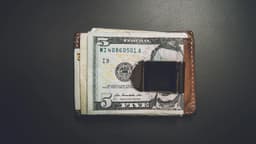How Do Japanese Celebrate New Year?
The New Year, known as "Shogatsu," is highly significant in Japan. It features various customs that emphasize serenity, reflection, and joy, differing from Western parties.
Embracing Purification and Renewal
Before the New Year, Japanese families perform "Oosouji," or "great cleaning." This thorough cleaning ritual symbolizes removing the past year's misfortunes and creating a pristine environment for the New Year deity, "Toshigami."
The Resonant Echoes of Joya no Kane
As the year ends, temples across Japan ring their bells during the "Joya no Kane" ritual. The bells strike 108 times, representing the release of 108 human sins or worldly desires. This sound cleanses the spirit and prepares for a fresh start.
A Culinary Symphony of Abundance and Symbolism
Food is central to New Year celebrations. "Osechi-ryori" consists of special dishes packed in jubako boxes. Each dish has auspicious meanings, such as "datemaki," a sweet rolled omelette for scholarly success, and "kazunoko," herring roe for fertility.
Another essential dish is "mochi," a chewy rice cake. "Kagami mochi," made of two mochi discs topped with a bitter orange, symbolizes harmony, good fortune, and longevity.
First Moments and Dreams of Good Fortune
Japanese New Year traditions include several firsts. "Hatsuhinode" celebrates the first sunrise. Many gather at hilltops or seasides to reflect on their goals for the year.
"Hatsuyume," the first dream of the year, is thought to have prophetic significance. Specific symbols like Mount Fuji or a hawk indicate good luck. Some place a picture of Mount Fuji under their pillow for positive dreams.
"Laughter is also a vital part of the New Year." "Waraijō," or the first laughter of the year, is essential for happiness in the months ahead. Families share laughter at midnight, signaling cheerfulness for the year.
Hatsumode: A Pilgrimage to Seek Blessings
"Hatsumode" refers to the first shrine or temple visit of the year. Millions visit these spiritual sites for blessings and divine favor. A popular destination is Tokyo's Meiji Shrine, where people seek good fortune. During Hatsumode, visitors often purchase "omamori" (protective charms) or "ema" (wooden plaques for wishes).
The Exchange of Nengajo: Preserving Social Ties
The exchange of "nengajo," or New Year's greeting cards, remains a valued tradition. These cards feature the upcoming year's Chinese Zodiac animal and reflect goodwill. Exchanging nengajo helps maintain social connections in a fast-paced society.
The Japanese New Year reflects a harmonious balance of Eastern traditions and festive cheer. It showcases a unique blend of joy, solemnity, and hope as families welcome a new year.
References
Japan National Tourism Organization (JNTO): Japan Travel
- Official website offering travel information, visa requirements, and sightseeing.
Japan Travel: Japan Guide
- Extensive guide for destinations, transportation, and activities.
Tokyo Cheapo: New Year’s Day in Tokyo
- A guide to New Year celebrations and events in Tokyo.
Japan Guide: Japanese New Year Traditions
- Information on New Year traditions, customs, and foods.
Japan Web Magazine: New Year's in Japan
- Articles and videos about Japanese New Year celebrations.















